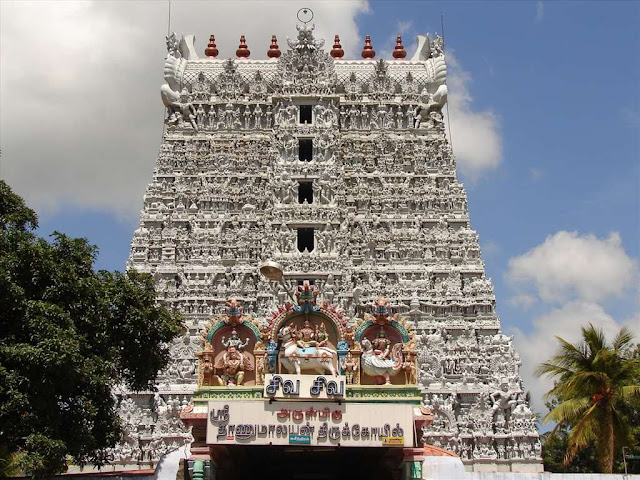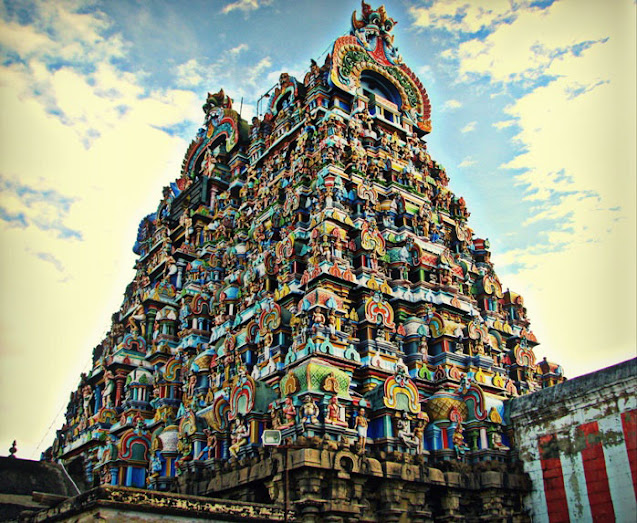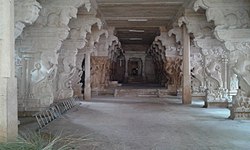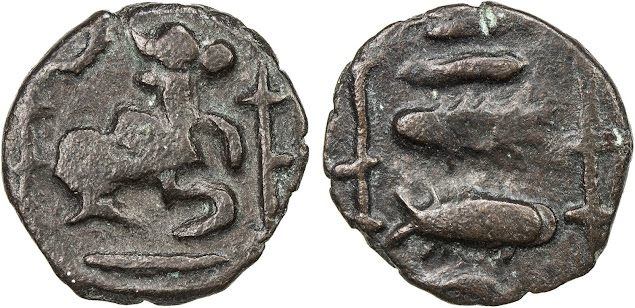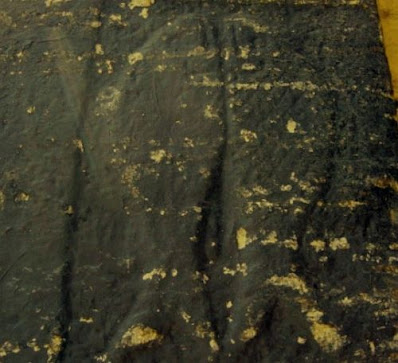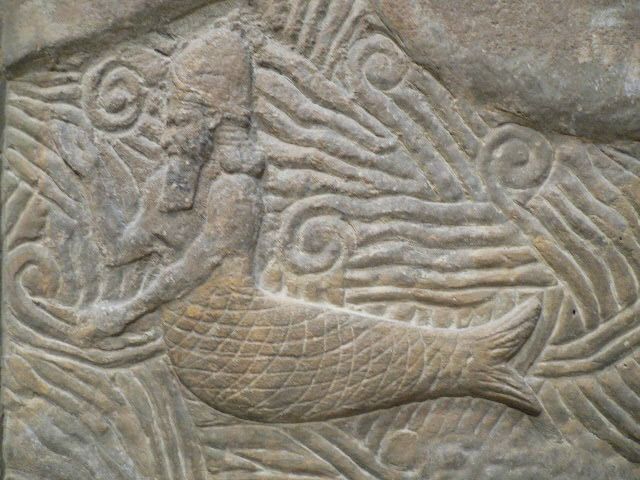Musical stone pillars in the world !!
In South India, Carnatic Music is considered as Sacred and musicians are highly regarded. It is the oldest form of classical music. Samaveda is the origin for Carnatic Music, one can easily find the references of music in the sculptures of Indian temples.
The stone sculpture of the below picture shows, one man playing Mridangam and a woman playing a Yazh, a classic string instrument.
Sa, Re, Ga, Ma, Pa, Dha, Ni... One can hear these sound notes from Vocal Singing and Musical instruments, But can these be heard from STONES ??? Yes, these swaras can be heard from the Musical stone pillars of few magnificent temples in South India. Stones play musical octaves !!
Music from stones - its a MAGIC !!!, this shows the artistic and scientific knowledge of highly skilled people of Ancient India. This magic won't happen anywhere outside India. There are various ancient traditional temples in South India where the pillars of which has the magical power to generate the sounds of these 7 swaras. Even today, tourist tap on these pillars to hear the musical sounds. South Indian temple architecture, stone antiquities and workmanship has always been a pride for India, in addition to that, these musical stone pillars in the temple added one more feather to the cap. The logic and scientific method behind the music from these stone pillars are still mystery to the World !!!
Now, let's see the marvelous ancient south Indian temples with outstanding architecture and their mysterious musical stone pillars.
Sthanumalayan Shiva Temple - Suchindram, Kanyakumari district, Tamil Nadu
This temple is important for devotees of both Lord Shiva and Vishnu. Sthanu - means Lord Shiva, Mal - mean - Lord Vishnu and Aya - means Brahma, one can see trinity of gods here. It is known for its sculptural wealth, which exhibits the Hindu mythologies and stories about this temple. The interior of the Dravidian style temple complex is skillfully carved with many scenes from Ramayana and Mahabharata Epics.
Temple Gopuram
Intricate carving in the Temple Gopuram
Musical pillars of Suchindram is famous across the world. These pillars are situated at Alankara Mandapam (Alankara complex) of this temple, there are four musical pillars carved out of single stone with the height of 18 feet each. The stone pillars of Alankara Mandapam emits sounds of various musical notes when its beaten accordingly.
Musical pillars at Alankara Mandapa
Apart from the sound of seven swaras, these pillars also produces the sound of Tabla and Chenda instruments. This temple is an architectural wonder of the world, music from stone pillars are amusing millions of tourists visiting this place and the technique behind sound from these pillars are still a mystery. Infinite Knowledge and workmanship of Indian architects are highly admirable !!!
Vijaya Vittala Temple - Hampi, Karnataka
Vijaya Vittala temple in Hampi is one of the ancient temple of South India. The main deity of this temple is Lord Vishnu. It is the epic center of Hampi's attraction, it is also known for its amazing architecture, grand complex, stone chariots, musical pillars and unmatched craftsmanship. It's the most magnificent and grandest temple in Hampi.
The notable feature of Vittala temple is the Musical pillars. There are 56 musical pillars situated at a large Ranga Mandapa (complex) . They are also called as SaRaGaMa pillars, which emits Sa Re Ga Ma swara sounds.
There are seven thin pillars circulate around one thick pillar at the center. Each of these emits sounds of different musical notes. Each thick pillar gives supports to the ceiling of the Mandapa.
Ranga Mandapa with ceiling
One can actually hear the music notes, if you tap on them gently. These seven minor pillars emit different musical notes , each note from these pillars produce different sounds , they will also change itself as string and wind instrument while being played / tapped.
The reason behind rhythmic sounds from these stone pillars are unknown. Many white invaders and Mughals tried to destroy the richness of the temple by lighting fire on these pillars. But it just reduced the decibel of the music, the sound was not stopped. During British reign, they cut two pillars to know the logic behind and what's there inside, but they only saw an empty pipe in that.
From time to time, this temple has witnessed many invasion of rulers. Today, this temple is also called as 'Ruins of Hampi', though many invaders tried to destroy the glory of this temple, they couldn't succeed it completely, they destroyed some of the structures and wall, but couldn't ruin more due to its hardness and toughness, That is the strength of this outstanding temple!. Not only the architecture and craftsmanship, the construction quality was also so strong that it is still standing majestically with pride of Mastery of Indians.
Nellaiappar Kovil - Tirunelveli, Tamil Nadu
Nellaiappar kovil is one of the most prominent temple located at Tirunelveli city of Tamil Nadu. Lord Shiva is named as 'Nellaiappar' in this temple, Nellaiappar means 'Protector of Paddy', in Tamil 'Nel' means Paddy. There is mythological story for this temple, which will be covered in my next post.
It is known for its countless exotic stone carved sculptures, extensive corridors adorned with towering pillars carrying intricate carvings. The thousand pillar hall is famous for its architectural excellence. This temple represents Tamara Sabha (Copper Hall), one of the famous five halls where Lord Shiva has performed the cosmic dance. It is more than 1300 years old with marvelous architecture and mystifying musical stone pillars dedicated to Lord Shiva, the Cosmic Dancer who keeps the universe vibrating with his rhythmic beats.
The musical pillars in Mani Mandapam which produces musical swaras with various pitches when struck. Mani Mandapam got its name from a hanging bell in the middle of the mandapam, each huge musical pillar was carved out of single rock comprises of small columns around. This mandpam (hall) is placed before the Main deity hall, it was designed in such way that musical prayer will be performed in front of God and for cultural events.
These pillars occur in cluster and set manner such that vibrations are generated from the neighboring pillars, when one pillar is tapped. There is a center thick pillar consisting of 48 small thin pillars carved from one piece of stone.
There are three types of musical pillars.
Type Sruti - can produce musical swaras , basic seven notes
Type Gana - Produce basic tunes that make carnatic Ragas
Type Laya - Produce Tala (Rythmic beats) when tapped
Also structurally there are two kinds of music pillars,
Tapping Pillars - music is produced from the stone pillar while tapping on it with fingers
Blowing Pillars - Sound is produced by blowing into the holes of the stone pillars
The musical stone pillars at this temple is unique, because it was designed in the combination of Sruti and Laya types. Nobody knows the intelligence of how these were designed to resonate musical frequency.
Meenakshi Amman Temple - Madurai, Tamil Nadu
Madurai Meenakshi Amman temple is considered as one of the Wonders of the World, for its gigantic tall Gopuram (Tower), rich sculptures, high walls, artistic ceiling and tales embedded with each of them. There are four entrances for this temple facing four directions , the colorful intricates on the outer Gopurams never failed to impress the first time visitors.
It is a vibrant and rich beauty of Dravidian style architecture, with an estimate of around 33,000 sculptures in this temple.
It takes one separate post to write about the glory of this temple. So, now coming to the topic of musical pillars, there are five musical pillars just outside the hall of 1000 pillars. There is grand hall named as 'Hall of 1000 pillars' (Aayiram Kaal Mandapam in Tamil), it actually contains 985 sculpted pillars.
These pillars were arranged brilliantly that from whatever angle one looks from within, the pillars looks in rows and rows.
The pillars at the beginning and at the end of the rows are the bigger ones with small pillars surrounding them and the one at the bottom could also be rolled. These are musical stone pillars, which produce musical notes while tapped. Today, It is not allowed to tap on these pillars now, in order to preserve them.
Musical pillar at Meenakshi Amman Temple
Alwar Tirunagiri Temple - Thoothukudi district, Tamil Nadu
It is famous Vishnu temple in Tamil Nadu. It was flourished during Pandya dynasty. The main attraction of this temple is its musical pillars, here both tapping and blowing pillars are found.
The stone Nagaswaram (Double Reed wind instrument) is one of the interesting feature of this temple. There are many other temples in South India, where you find musical pillars.
The heritage sites are the excellent examples to show infinite knowledge of Indian artisans and their skilled workmanship. Sculptures of many musicians and music instruments are found on the walls of temples, which shows the wealth of carnatic music from ancient times.
These striking temples and stupendous architecture evinces that the Carnatic Music was considered highly divine and integral part of our culture.
- Aarthi Thiyagarajan


